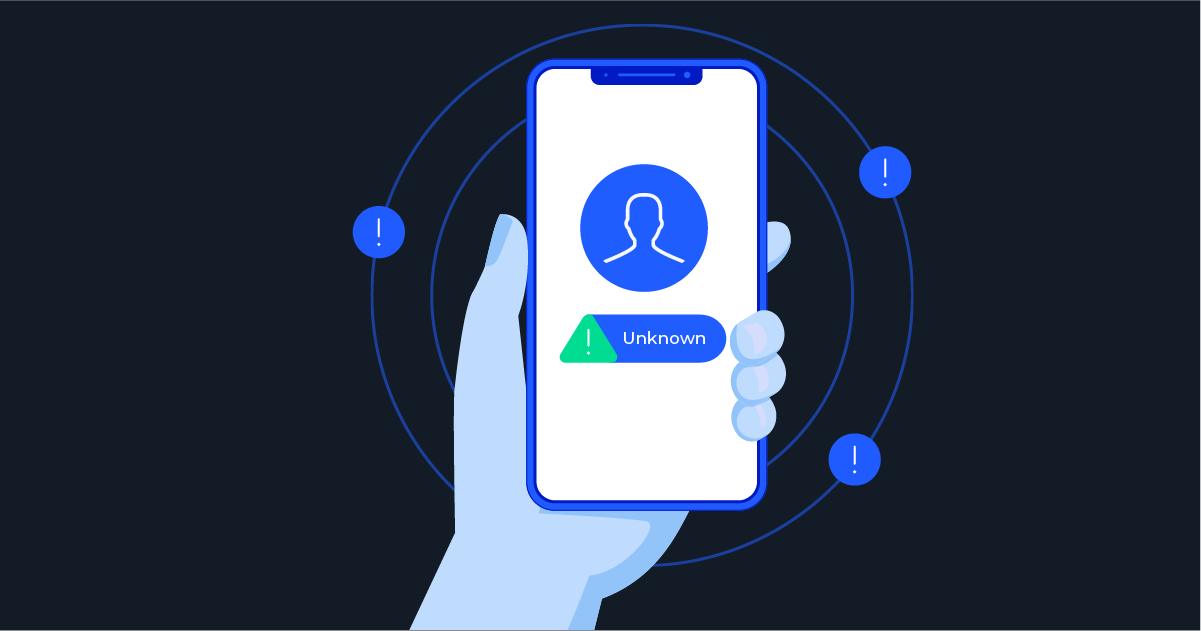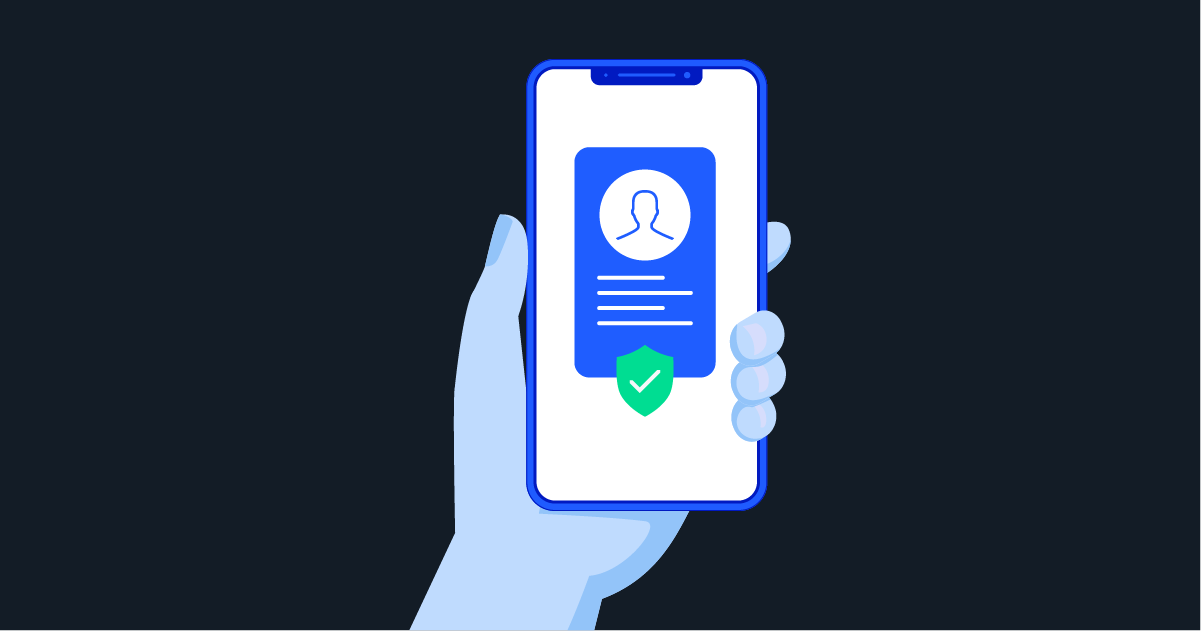
Phone-based fraud has become one of the most persistent threats to digital security. Phone numbers are the connective tissue of the digital world, linking users to apps, financial accounts, and online services.
Every time someone signs up for a new app, verifies a bank transaction, or resets a password, they enter a phone number —making phone number verification and phone number validity important for secure digital interactions. This small detail is a powerful anchor for digital identity. But where there’s value, fraudsters follow. Disposable numbers, SIM farms, recycled numbers, and SIM swap attacks are now common tactics for criminals who want to slip past defenses.
If your organization isn’t actively considering how to check if a number is fraud using a phone validation API or phone number verification tool, you could face unnecessary risks. Fake numbers can affect your systems with bogus accounts, erode trust, and expose your business to compliance challenges. That’s why leaders in industries like fintech, e-Commerce, healthcare, and hospitality are adopting phone number verification and number verification APIs to support digital security.
This blog will help you understand how to validate a phone number, check phone number reputation, what telco fraud signals to trust, and how to leverage solutions like Telesign’s Phone ID to protect your business and your customers.
Table of Contents
What does it mean to check if a number is fraud?
When we talk about checking whether a phone number is fraudulent, it’s not as simple as asking “is this number real?” Instead, it’s about building a layered profile that evaluates risk from multiple angles:
- Validity: Is the number formatted correctly and currently active? This is the first step of phone number validity checks.
- Type: Is the number a mobile, landline, VoIP, or disposable line? Fraudsters tend to favor VoIP and disposable numbers.
- Risk factors: Has the number been linked to abuse, spam, or fraudulent behavior in the past?
- Carrier and porting: Has the number recently changed networks, a common sign of risk?
- Behavioral signals: How is the number being used? Is it tied to multiple accounts? Are there velocity spikes or mismatches between its geography and the user’s profile?
Together, these data points create a picture of what is commonly referred to as phone number reputation. Businesses can then use this phone number risk analysis to accept, flag, or block a risky user.
Why it matters to detect fraudulent phone numbers
The stakes are high when it comes to number-based fraud. Consider these scenarios:
- A fraudster uses a recycled number that belonged to a legitimate customer last year, tricking your system into linking accounts incorrectly.
- A disposable number is used to create dozens of fake accounts, inflating user metrics, and opening the door to abuse.
- A malicious actor executes a SIM swap, intercepting one-time passcodes and draining a customer’s bank account.
Without proper defenses, mobile number fraud can lead to operational issues, compliance risks, and reduced customer trust. Businesses that know how to check phone number reputation through a phone number validation API have a practical advantage in mitigating risk.
Telesign’s Phone ID: Real-time number intelligence
Phone number verification APIs are essential tools for assessing whether a phone number can be trusted. Telesign’s Phone ID provides real-time number intelligence that helps confirm if a number is active, valid, and aligned with the user’s identity. By combining telecom data and behavioral insights, it enables informed, data-driven verification decisions through real-time number intelligence and telco fraud signals:
- Validation: Detect if a number is active, inactive, or recently ported.
- Risk recommendations: Identify signs of SIM swaps and other fraud markers.
- Carrier and line type: Discover who owns the number and what kind of line it is.
- Geo matching: Check whether the number’s origin matches the user’s IP or claimed location.
- Fraud detection: Flag disposable or recycled numbers before they cause damage.
With global reach across more than 230 countries and easy REST API integration, Phone ID allows businesses to verify a phone number efficiently and at scale. It also plays a key role in broader processes like customer identity verification and phone-based authentication, strengthening trust across digital interactions.
How to check if a number is fraud
The process of evaluating phone number risk can be broken into a step-by-step flow:
- Collect the number: Ensure the user inputs the number in the E.164 international format.
- Validation: Use a phone validation API to confirm if the number exists and is reachable.
- Line-type and carrier check: Determine if the number is mobile, landline, VoIP, or disposable, and identify its carrier.
- Risk factor analysis: Cross-reference against fraud databases, past abuse history, and velocity patterns.
- Contextual matching: Compare location, IP, and user information to confirm consistency.
- Decisioning: Categorize the number as low risk (green), medium risk (yellow — step-up authentication required), or high risk (red — block or flag).
By integrating this process into onboarding or transaction flows, organizations can automate decisions and minimize fraud exposure without unduly affecting legitimate customers.
AI advancements in phone fraud detection
Machine learning has transformed how companies detect fraudulent phone numbers. Rather than relying solely on static rules, AI models analyze billions of telco and behavioral signals in real time. Benefits include:
- SIM swap detection: Identifying suspicious patterns before fraudsters can exploit them.
- Anomaly detection: Spotting unusual activity across carriers, geographies, or user behaviors.
- Adaptive risk modeling: Continuously updating risk recommendations based on evolving threats.
- Behavioral biometrics: Pairing telecom metadata with usage patterns to catch synthetic identities.
This adaptive intelligence is key to staying ahead of fraud rings that evolve just as quickly as your defenses.
Trends and industry statistics
The growing complexity of digital fraud has made mobile number verification a critical layer of defense for modern businesses. As identity threats evolve, attackers increasingly exploit vulnerabilities tied to phone numbers—whether through SIM swaps, recycled numbers, or synthetic identities.
The increasing scale of mobile number verification and phone fraud detection efforts reflects how critical phone verification APIs have become in safeguarding identity systems worldwide. The following figures illustrate the scale and urgency of the issue:
- 74% of fintech fraud originates from mobile numbers.
- 35 million recycled numbers are reused in the U.S. annually.
- The cost of synthetic ID fraud per case averages $15,000.
- The UK alone has experienced an 1,000% surge in SIM swap attacks in 2025.
Together, these statistics highlight a systemic, fast-growing problem that demands stronger verification practices across every stage of the customer lifecycle.
Best practices for checking phone numbers
Effective fraud prevention depends on more than simply identifying bad actors—it requires monitoring phone numbers and adjusting risk responses over time. Implementing robust verification workflows helps businesses strike the right balance between security and user experience. The following best practices can strengthen your approach to phone number intelligence and identity assurance:
- Validate early: Run format and reachability checks using a phone number validation tool the moment a number is entered.
- Use step-up authentication wisely: Combine Phone ID with SMS Verify for medium-risk cases.
- Combine signals: Don’t rely only on numbers — use device, IP, and payment data as well.
- Monitor continuously: Numbers that are safe today could be risky tomorrow due to SIM swaps or porting.
- Adjust thresholds: Set flexible rules based on real-time analysis of phone number risk factors, adapting as conditions and behaviors change.
Following these practices helps maintain a high level of fraud protection without introducing unnecessary friction into the customer journey.
Why Telesign leads in phone number verification
Telesign’s number intelligence capabilities are grounded in telecom expertise and data-driven insight. These strengths enable organizations to better understand phone number activity, analyze potential risks, and support safer digital interactions.
- Extensive partnerships with more than 2,000 global networks.
- Machine learning models trained on real-world telecom and behavioral data.
- Infrastructure designed to handle millions of daily verifications and transactions.
- Adoption across sectors such as fintech, e-Commerce, and mobility.
By combining telecom data with scalable APIs, Telesign delivers reliable solutions for phone number validation and mobile number verification across industries. To learn more about how number intelligence supports onboarding and engagement, read our blog on phone number lookup.
The evolving role of phone numbers in fraud protection
As digital ecosystems expand, phone numbers have become more than just communication tools—they’re central identifiers in verifying and protecting user identities. To stay ahead of increasingly sophisticated fraud tactics, businesses need reliable ways to check if a number is fraud, using real-time number intelligence and data-backed analysis to inform decisions and support proactive fraud mitigation.
By integrating solutions like Telesign’s Phone ID, organizations can strengthen verification processes, reduce potential risk, and support the foundation for more trusted digital experiences. Use Telesign’s Phone ID to add real-time phone number risk detection to your identity verification workflows.
Explore how Telesign’s number intelligence solutions help businesses get actionable global phone number and subscriber data intelligence to strengthen authentications, evaluate fraud risks, and enhance the user experience—talk to our experts today.
Frequently asked questions
Telesign uses real-time number intelligence, telco signals, and machine learning to detect potentially risky behavior. Its Phone ID API analyzes carrier data, SIM swap patterns, and phone number reputation to help identify potentially fraudulent numbers.
A phone number verification API like Telesign’s Phone ID is designed to validate a number’s status, line type, and activity in real time. It also acts as a phone fraud detection solution by flagging disposable, VoIP, or recycled numbers linked to fraud.
Yes. The phone number validation API operates in milliseconds, providing accurate status updates on whether a number is active, ported, or potentially risky—helping businesses make informed verification decisions before onboarding or transaction approval.
By leveraging telco fraud signals, behavioral analytics, and AI models, Phone ID identifies suspicious patterns such as SIM swaps or number recycling, protecting against mobile number fraud and fake account creation.
Yes. The number verification API integrates seamlessly into any system via REST and supports standard JSON/XML formats, enabling developers to embed a phone number verification tool into registration, login, or payment workflows.



